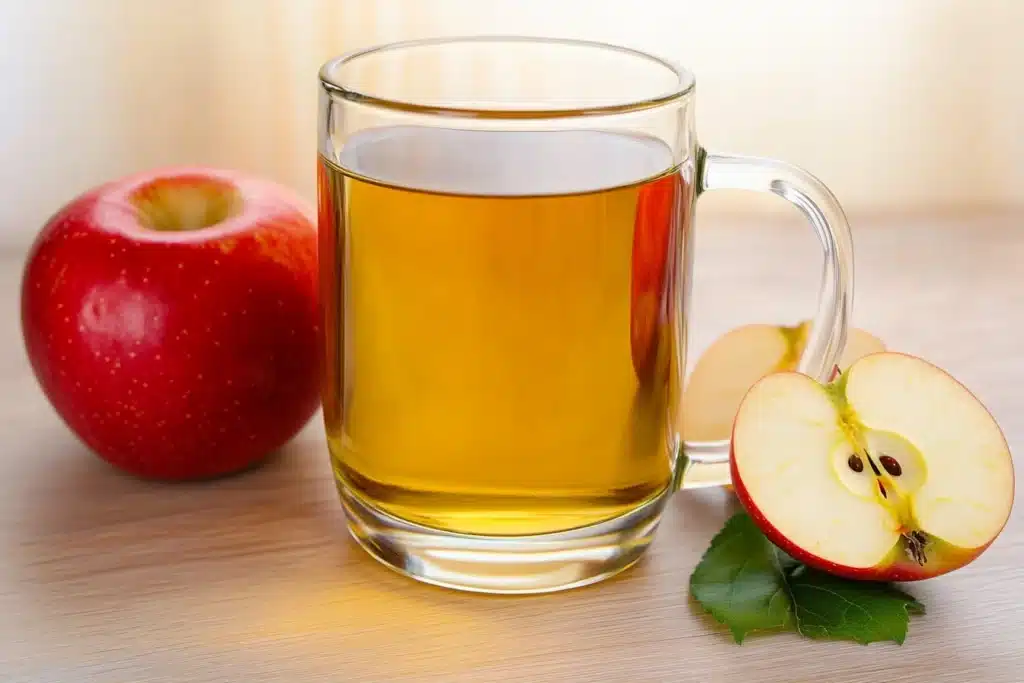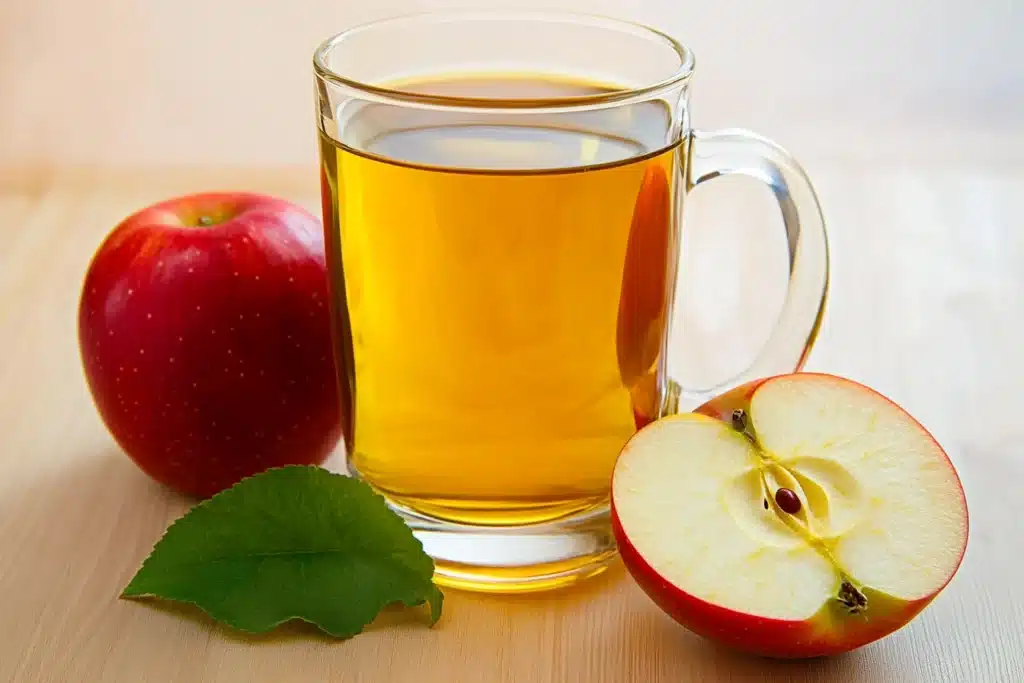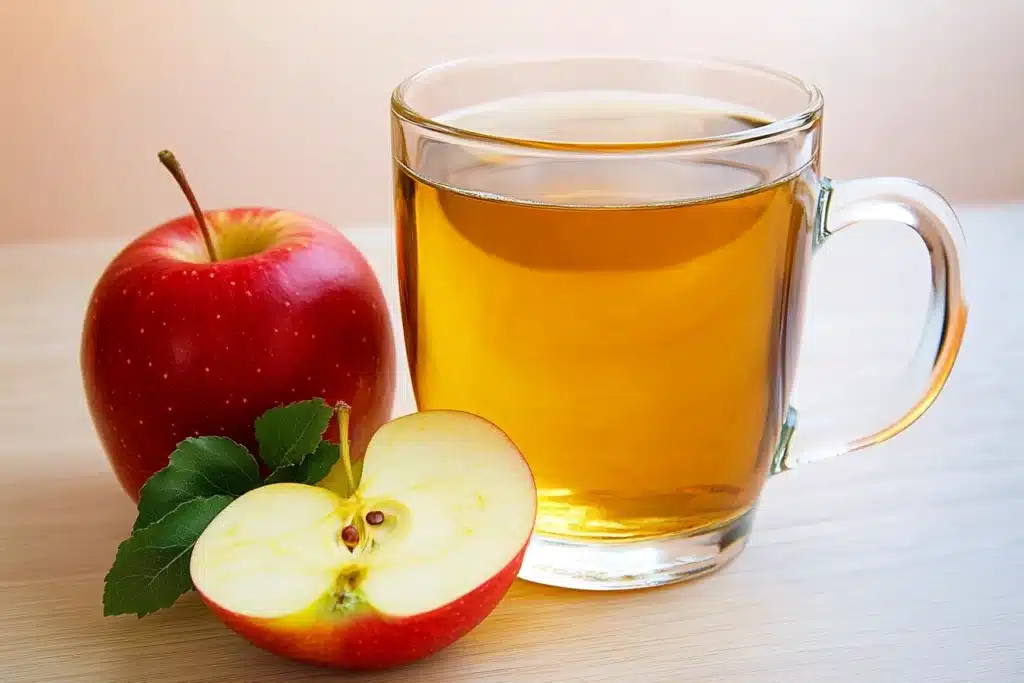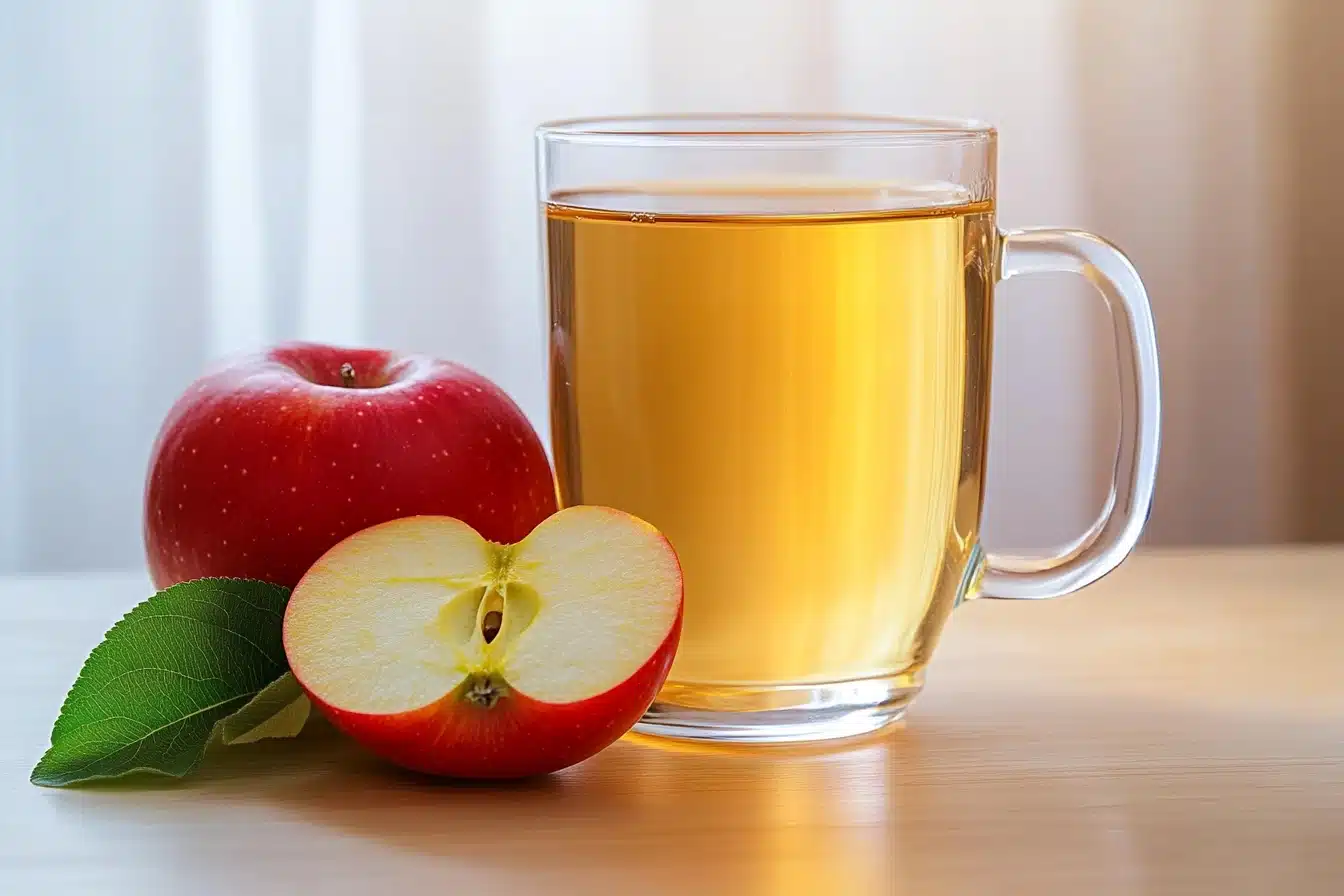Table of Contents
Introduction
Most folks know apple cider vinegar as that tart, funky stuff you splash into salad dressings or chug for supposed health benefits. But behind that sharp bite is a process that’s equal parts ancient and beautiful—a real transformation. And the best part? You can make it yourself with nothing but apples, sugar, and time.
Homemade apple cider vinegar isn’t some hipster project. It’s old-school fermentation. It’s taking scraps and leftovers—peels, cores, bruised fruit—and turning them into something alive, acidic, and complex. There’s something raw and real about letting nature do its thing in your kitchen. No gimmicks. No preservatives. Just biology and patience.
The vinegar you get is miles ahead of store-bought stuff. It’s cloudy, pungent, and full of depth. If you’re into gut health, clean ingredients, or just want to flex your DIY muscles, this is a perfect project. You don’t need special gear. You don’t need to be a chemist. You just need to trust the process.
Whether you’re making it to boost your immune system, clean your countertops, or pickle some red onions, this apple cider vinegar is the real deal. It starts humble and ends mighty. Let’s dive in.

Why You’ll Love This Recipe
- No waste: Uses apple scraps you’d normally toss.
- Simple ingredients: Apples, sugar, and water.
- Naturally fermented: No additives or shortcuts.
- Multi-use: For cooking, cleaning, and health remedies.
- Satisfying DIY: Watch the transformation happen.
Ingredients
- Apple scraps (peels, cores, bruised bits) from 6–10 apples
- 2 tablespoons sugar (per 1 cup of water)
- Filtered water (enough to cover apples)
- Optional: a slice of raw ACV with the mother to jumpstart fermentation
Instructions
- Prep the apple scraps. Place them in a clean, wide-mouth glass jar. Don’t pack them tight—leave room.
- Make sugar water. Dissolve the sugar in filtered water. Pour over apples until they’re completely submerged.
- Weigh down apples. Use a fermentation weight or clean rock in a bag to keep apples under the surface.
- Cover the jar with cheesecloth or a coffee filter and secure with a rubber band.
- Let it sit. Store in a dark, room-temperature spot (60–75°F) for 3–4 weeks. Stir every few days and check for mold.
- Strain solids. After fermentation smells tangy, strain out apples and return liquid to the jar.
- Ferment again. Cover and let it sit another 3–4 weeks, stirring occasionally.
- Taste it. Once it’s vinegary enough for you, seal with a lid and store in the fridge or cool pantry.
Tips & Variations
- Add raw ACV to kickstart fermentation.
- Use different apple types for flavor variety.
- Don’t use chlorinated water—it kills the good bacteria.
- Avoid metal containers—they react with the acid.
Note
If you see mold on top, it’s likely from floating apples. Skim it off and keep going unless it smells truly rotten.

Serving Suggestions
- Use in vinaigrettes or marinades.
- Add a spoonful to tea or water for a tangy boost.
- Use as a natural cleaner for glass or countertops.
- Mix with honey and hot water for a soothing drink.
Nutrition Information (Per Tablespoon – Approximate)
- Calories: 3
- Carbohydrates: 0.1g
- Sugar: 0g
- Fat: 0g
- Sodium: 0mg
- Acetic Acid: ~5%
User Reviews/Comments
Cameron J. – “It’s wild watching this stuff ferment. Smells intense but tastes amazing after a few weeks.”
Lori M. – “Used apple peels from pie making—came out perfect. Never buying store vinegar again.”
Ethan R. – “Added a spoonful of store-bought raw vinegar and it helped the whole batch kick off quicker.”
Hannah D. – “Takes patience, but totally worth it. I use mine daily in salads and homemade tonics.”
FAQs
Can I use whole apples instead of scraps? Yes. Just chop them up. Using scraps is more sustainable, but whole apples work fine.
What if my vinegar smells bad? Trust your nose. Vinegar should smell tangy, maybe a bit funky. If it smells putrid or rotten, toss it.
Is the “mother” necessary? No, but it helps. Raw, unfiltered ACV from the store can jumpstart fermentation. Your homemade batch will develop its own mother over time.
Can I flavor it? Absolutely. After fermentation, infuse with herbs, garlic, or even citrus peel.
How long does homemade apple cider vinegar last? Stored properly, it lasts indefinitely. The acidity preserves it naturally.

Conclusion
Making apple cider vinegar from scratch connects you with one of the oldest and simplest kitchen rituals. It’s raw, unfiltered, and full of life—something store shelves just can’t replicate. From humble apple scraps to powerful pantry staple, this vinegar is a slow burn that’s worth every day of waiting.
Whether you use it in recipes, for wellness, or cleaning around the house, homemade ACV reminds you that good things take time—and usually start in your compost bin.
If you’re curious about how vinegar fits into global food history, check out this Wikipedia article on vinegar to dive deeper.
Now grab some apple cores, sugar, and a jar—your first batch is waiting.
Print
How to Make Apple Cider Vinegar at Home Easily
Ingredients
- Apple scraps (peels, cores, bruised bits) from 6–10 apples
- 2 tablespoons sugar (per 1 cup of water)
- Filtered water (enough to cover apples)
- Optional: a slice of raw ACV with the mother to jumpstart fermentation
Instructions
- Prep the apple scraps. Place them in a clean, wide-mouth glass jar. Don’t pack them tight—leave room.
- Make sugar water. Dissolve the sugar in filtered water. Pour over apples until they’re completely submerged.
- Weigh down apples. Use a fermentation weight or clean rock in a bag to keep apples under the surface.
- Cover the jar with cheesecloth or a coffee filter and secure with a rubber band.
- Let it sit. Store in a dark, room-temperature spot (60–75°F) for 3–4 weeks. Stir every few days and check for mold.
- Strain solids. After fermentation smells tangy, strain out apples and return liquid to the jar.
- Ferment again. Cover and let it sit another 3–4 weeks, stirring occasionally.
- Taste it. Once it’s vinegary enough for you, seal with a lid and store in the fridge or cool pantry.
Notes
- Add raw ACV to kickstart fermentation.
- Use different apple types for flavor variety.
- Don’t use chlorinated water—it kills the good bacteria.
- Avoid metal containers—they react with the acid.
